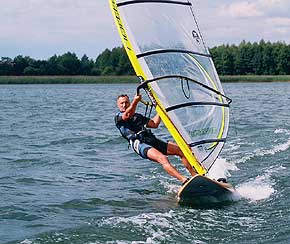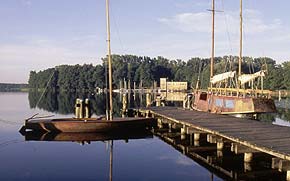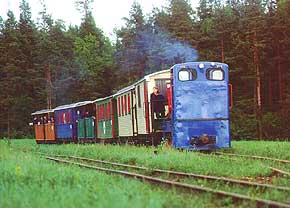|
15th |
WIGRY NATIONAL PARK
|
||||
|
of "WIGRY"
|
Jaros³aw Borejszo
Tourism in the Wigry National Park - 15 years of experience
The Wigry National Park, with its various precious natural values, is one of a most attractive tourist places in north-eastern Poland. A great diversity of surface features, water relations and biocenoses decide about the outstanding tourist values of the WNP, which gives an unusual mosaic-like quality of the landscape as a result. Surface waters are a basic value of the Park’s area, especially Lake Wigry, which, together with the surrounding smaller reservoirs, creates a unique complex of lakes. Also valuable monuments of culture, with “centrally” located post-Cameldolite cloister as the most important one, influence a significant visual attractiveness of the landscape.
By the end of the 1970s, there were over 25 thousand tourists on Lake Wigry. Nowadays the number is estimated for 100 thousand people a year. The following elements are included in a tourist service offer: a forest narrow-gauge railway, boat cruises, chaise rides, bike rent shops, new bars and restaurants, organization of canoeing rallies, traditional “black” saunas (steam baths), regional entertainment, dairy workshops – and these are only part of the offer, which is getting richer and richer. Undoubtedly, there is still a lot to be done, but each year brings changes for the better.
The Park’s task is to make it available to the public, but in such a way that a negative influence of tourist activities on nature is as little as possible. Tourist tracks play a very important role. At present, their length amounts to 217 km, 163 km out of which are suitable for biking tourism. Necessary infrastructure is being built along the tourist tracks – places to have a rest, information boards, foot-bridges, viewing platforms and towers, car-parks. Over the last few years biking tourism has been the most popular form of activity. In 2003, the following biking routes were marked: International biking route Euro Velo R-11 and Biking ring of the Suwalszczyzna.
The Wigry National Park supports the development of balanced tourism, which reconciles social, economic and natural respects. More and more people are looking for “green holidays” far away from hubbub and crowds.
At the end of the 1970s, there were nearly 5 thousand beds available for the night around Lake Wigry, mainly during the season and of low standards. Even before the national park was established, restrictions resulting from protection of natural values had been introduced. Sleeping facilities are mainly concentrated in the surroundings of existing villages.
In summer, lakes are a main purpose of recreational penetration in the lake district. People visiting the Park can sunbathe, swim, fish and do water tourism. A project for horse-riding tourism development is gradually implemented in the WNP. The forms of tourism practised in the Wigry National Park make a “balanced” use of tourist values possible; they are also an essential element of local people’s income.
|
||||
|
|
|




